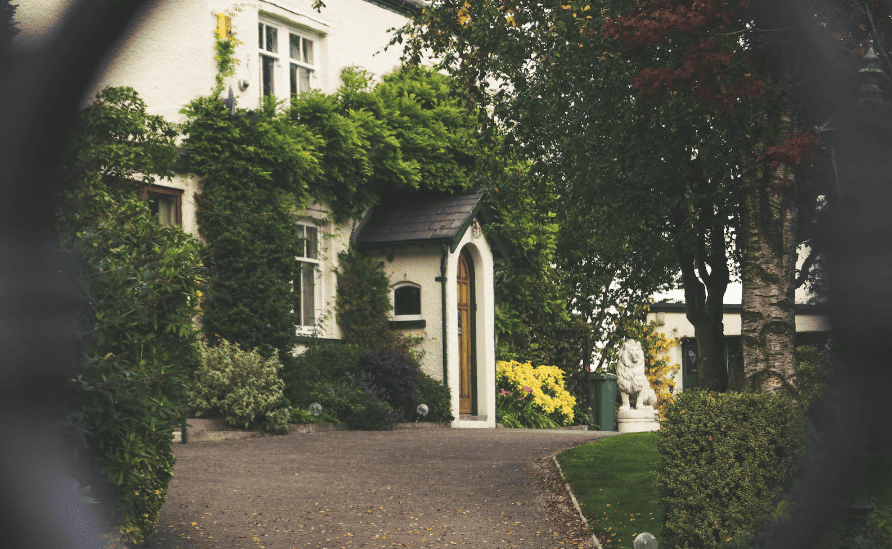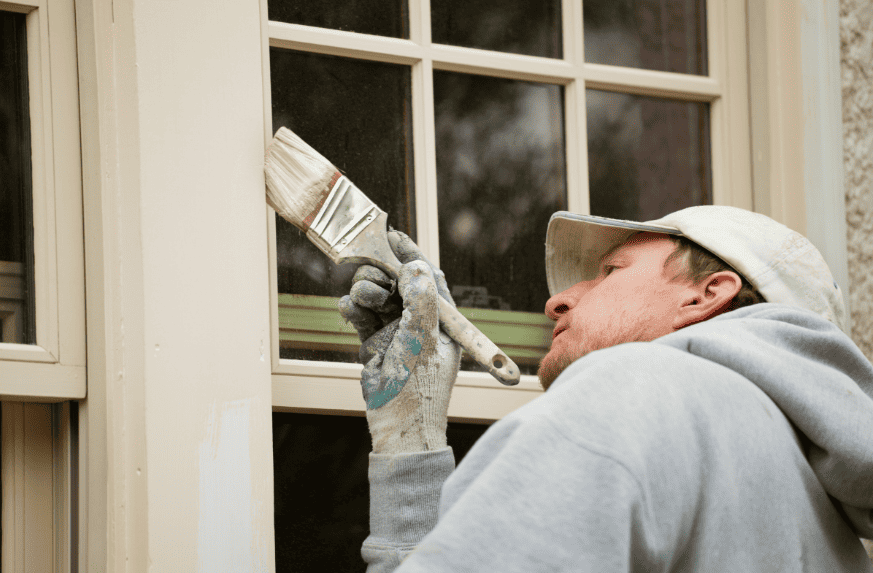Your home's exterior is the first thing people see, and maintaining your home's exterior plays a crucial role in protecting your investment. Neglecting its maintenance can lead to costly repairs down the line.
Table of Contents
To ensure your home structure stays in top shape, here are some essential tips on maintaining your home's exterior:
1. Roof Maintenance: Protect the Overhead
Your roof is a vital component of your home's exterior, and it needs regular care too. Inspect your roof for missing or damaged shingles, as well as signs of wear and tear. Clean out your gutters and downspouts to prevent water from backing up and causing damage.
If you're not comfortable doing this yourself, hire professional commercial roofing services to ensure your roof remains in excellent condition. This will ensure that your roof is in perfect condition for years to come.

2. Regular Cleaning: Keep It Shining
The first step in maintaining your home's exterior is regular cleaning. Dirt, grime, and mildew can accumulate on your siding, causing it to look unsightly and even damaging the material.
To prevent this, invest in a pressure washer or hire a professional to clean your exterior, including tiles, walls, the doors, annually. For stubborn stains, you might need to use a mild detergent and scrubbing brush. Pay special attention to areas near trees or bushes, as these tend to accumulate more dirt and debris.
3. Inspect and Repair: Stay Ahead of Damage
Preventing small issues from turning into significant problems can save you time and money. Regularly inspect your home's exterior for any signs of damage, like cracks in the siding, loose shingles, or deteriorating caulk.
Address these issues promptly, as they can lead to more extensive and expensive repairs if left unattended. Don't forget to inspect your gutters for clogs, as overflowing water can cause damage to your roof and siding.
- Seasonal Inspections: Perform thorough inspections at the start of each season. Look for any visible signs of wear and tear, like peeling paint or missing roof shingles, and address them promptly.
- Caulk and Seal: Pay special attention to areas around doors and windows. Check for cracks or gaps in the caulking, and replace it as needed. This will improve your home's energy efficiency and prevent water infiltration.
- Gutter Maintenance: Regularly clean out your gutters to prevent clogs. Clogged gutters can lead to water overflow, which can damage your roof, siding, and even your foundation. Consider installing gutter guards to reduce debris buildup.
- Proactive Repairs: When you identify any issues during your inspections, don't delay in making necessary repairs. Small problems can quickly escalate into major headaches, so addressing them promptly can save you from more extensive and costly renovations in the long run.
4. Painting and Staining: Preserve the Finish
Paint and stain are not just for aesthetics; they protect your home's exterior from the elements. Over time, these finishes can wear down, exposing your siding to the elements and increasing the risk of damage.
Depending on the material, you may need to repaint or restain your exterior every 5-10 years. Make sure to choose high-quality, weather-resistant paints and stains to ensure longevity.
5. Landscaping and Vegetation: Keep a Safe Distance
While greenery enhances the beauty of your home, it can also be a source of damage if not managed properly. Tree branches too close to your roof can scratch or fall onto it during storms.
Plant roots can damage your foundation if they're too close. Ensure that trees and shrubs are trimmed regularly, and maintain a safe distance from your home. This will protect your exterior and prevent costly repairs.
- Tree Branches: Trim any tree branches that are in close proximity to your roof or other structures. During storms, these branches can scrape against the surface, causing damage or even falling and creating a hazardous situation.
- Plant Roots: Plant roots can be equally damaging, particularly if they encroach upon your home's foundation. This can lead to cracks and structural issues. Maintain a safe distance between trees, shrubs, and other plants from your house to prevent root-related damage.
- Regular Pruning: Regularly prune your trees and shrubs to ensure they don't become overgrown. Pruning not only keeps them in check aesthetically but also reduces the risk of damage to your exterior.
- Mulch and Barriers: Consider using mulch or other root barriers to keep plant roots from spreading too close to your home. This simple step can prevent costly repairs down the line.
6. Pest Control: Ward off Unwanted Visitors
Maintaining your home's exterior also involves looking for pests. Pests can be a nightmare for your home's exterior.
Termites, ants, and other critters can cause significant damage to wood and siding. To prevent infestations, keep an eye out for any signs of pest activity, such as small holes in wood, droppings, or discarded wings.
If you notice any of these signs, it's crucial to address the issue promptly with the help of a pest control professional.
- Regular Inspections: Schedule routine pest inspections for your home, especially if you live in an area prone to termite infestations. Early detection is key to preventing extensive damage.
- Seal Entry Points: Ensure that there are no openings or cracks in your home's exterior that pests could use to gain access. Seal any gaps around windows, doors, and utility entrances.
- Keep Wood Dry: Termites are particularly drawn to damp or rotting wood. Maintain proper drainage around your home and replace any water-damaged or rotting wood promptly.
- Professional Pest Control: If you suspect an infestation, it's best to hire a pest control professional who can assess the extent of the problem and recommend the most effective treatment. They can also provide preventive measures to keep pests at bay in the future.
7. Window and Door Seals: Prevent Energy Loss
The seals around your windows and doors are essential for energy efficiency and protection against the elements. Over time, these seals can wear out, leading to drafts and increased energy bills.
Regularly inspect the caulk and weather stripping around your windows and doors, and replace them as needed to keep your home well-insulated.
- Regular Inspection: Periodically check the condition of caulk and weatherstripping around windows and doors. Look for any gaps, cracks, or signs of wear. This can be done during your routine exterior maintenance checks.
- Prompt Replacement: If you notice any damage or wear in the seals, don't delay in replacing them. Damaged seals can result in drafts, making it harder to control indoor temperatures and increasing your energy bills.
- You should also get a door sweep if you don’t currently have one, or the existing component is past its prime. These components suffer a lot of wear over time and are simple to replace, so they should be a priority.
- Use High-Quality Materials: When replacing seals, invest in high-quality caulk and weatherstripping. These materials are more durable and provide better insulation, helping you maintain a comfortable indoor environment.
- Consider Double-Glazed Windows: If your budget allows, consider upgrading to double-glazed windows, which have two layers of glass with a sealed space in between. These windows offer superior insulation and can significantly reduce energy loss.
8. Outdoor Furniture and Decor: Store and Maintain
If you have outdoor furniture, decorations, or other items on your property, don't forget to maintain them as well. Exposure to the elements can cause these items to deteriorate.
When it comes to maintaining your home's exterior, consider adding a touch of elegance with tall narrow planters for your patio.
Regularly clean and store them during the off-season to prolong their lifespan. This not only enhances your property's aesthetics but also saves you money in the long run.
Bonus – Enhancing Home Exterior with Rhode Island Red Eggs
To preserve your home's exterior, meticulous attention is vital, encompassing power washing and landscaping for optimal curb appeal.
Raising Rhode Island Red hens for distinctive brown eggs ensures a sustainable food source and infuses farmhouse charm into your property. These fresh, homegrown eggs establish a unique connection to your home's exterior, highlighting the significance of homeownership details.
FAQs on Maintaining Your Home's Exterior:
1. How often should I clean my home's exterior?
Regular cleaning should be a part of maintaining your home's exterior. For instance, pressure washing, should be done annually. However, you might need more frequent cleaning if your home is located in an area with heavy pollution, surrounded by trees, or experiencing harsh weather conditions.
2. What signs should I look for during a home exterior inspection?
During an inspection, watch out for cracks, rot, peeling paint, loose shingles, damaged caulking, pest activity, and signs of wear and tear on windows and doors. It's also important to check the gutters for clogs.
3. When is the best time to repaint or restain the exterior of my home?
The ideal time to repaint or restain your home's exterior varies depending on the climate and the type of finish you use. In general, you should plan for this every 5-10 years. However, consult with a local professional for specific recommendations based on your location and the condition of your siding.
4. What should I do if I notice pests around my home's exterior?
If you notice signs of pests, such as termites or ants, it's essential to address the issue promptly. Contact a pest control professional to assess the situation and recommend the appropriate treatment to prevent further damage.
5. How can I best protect my outdoor furniture and decorations from the elements?
To preserve your outdoor furniture and decor, clean and store them during the off-season. If space is an issue, consider investing in weather-resistant covers. Regular maintenance, like cleaning and occasional touch-ups, will also help extend the life of your outdoor items.
In maintaining your home's exterior in top shape, you're not only preserving its curb appeal but also protecting your investment. By following these eight tips, you can prevent damage, reduce the risk of costly repairs, and ensure that your home remains beautiful and functional for years to come.
Regular cleaning, inspections, pest control, and proper maintenance of every aspect of your home's exterior will make it a place you can be proud of while also securing its long-term value.


